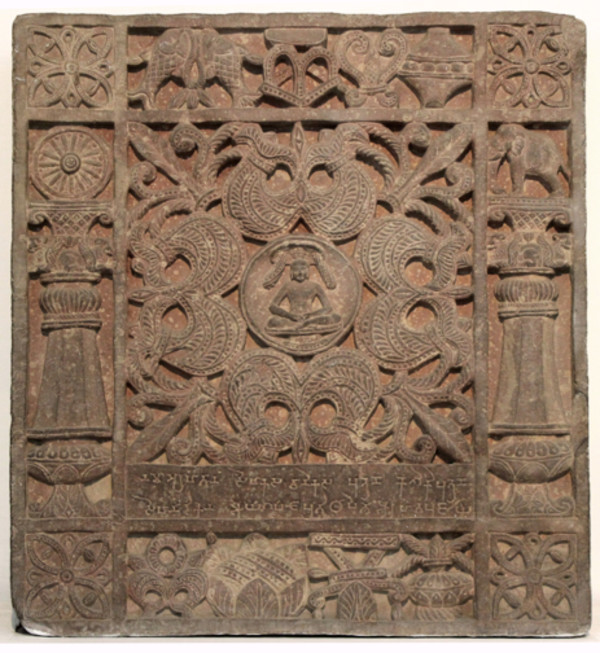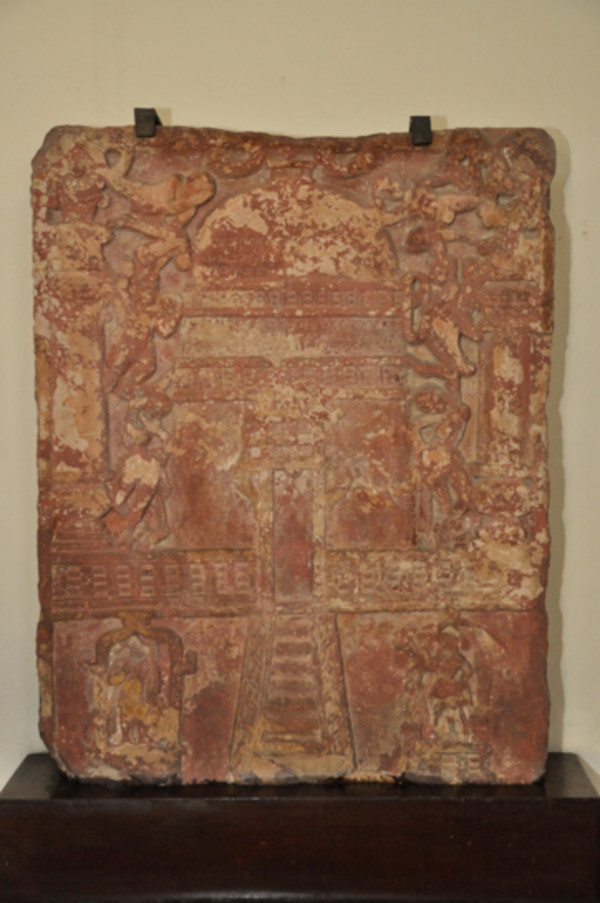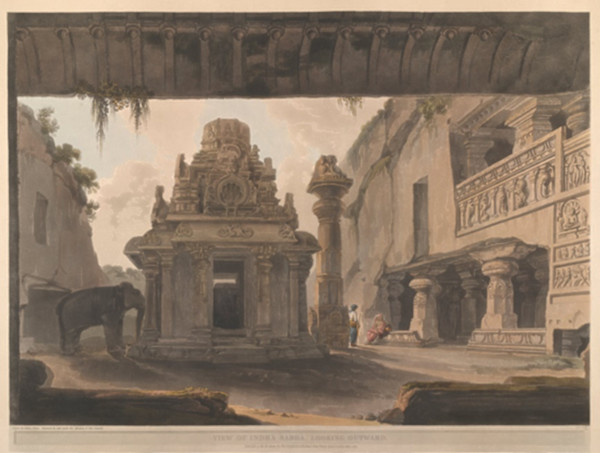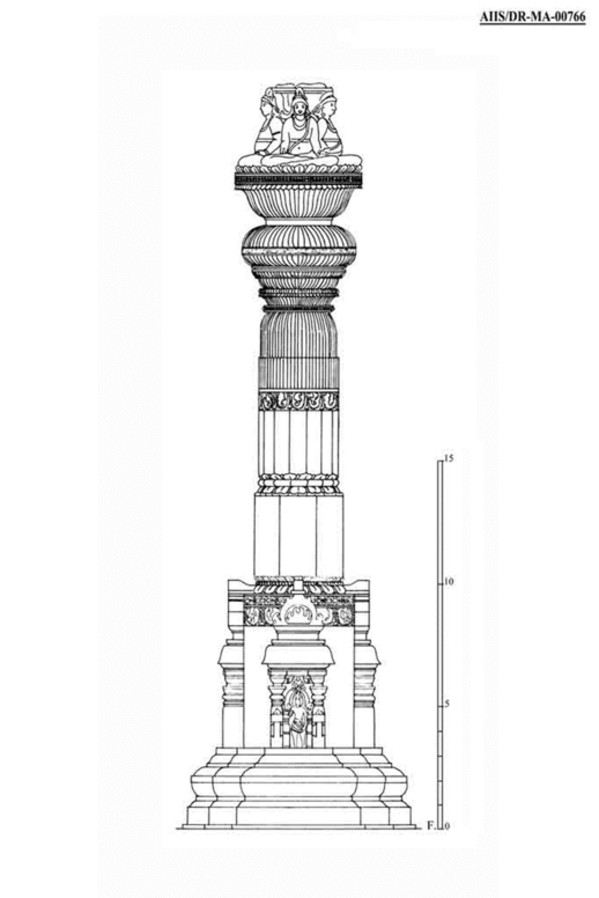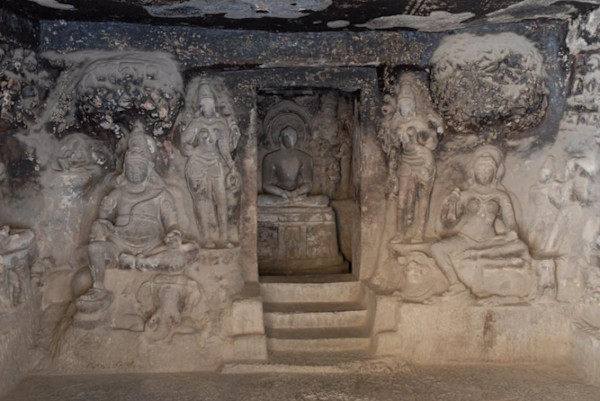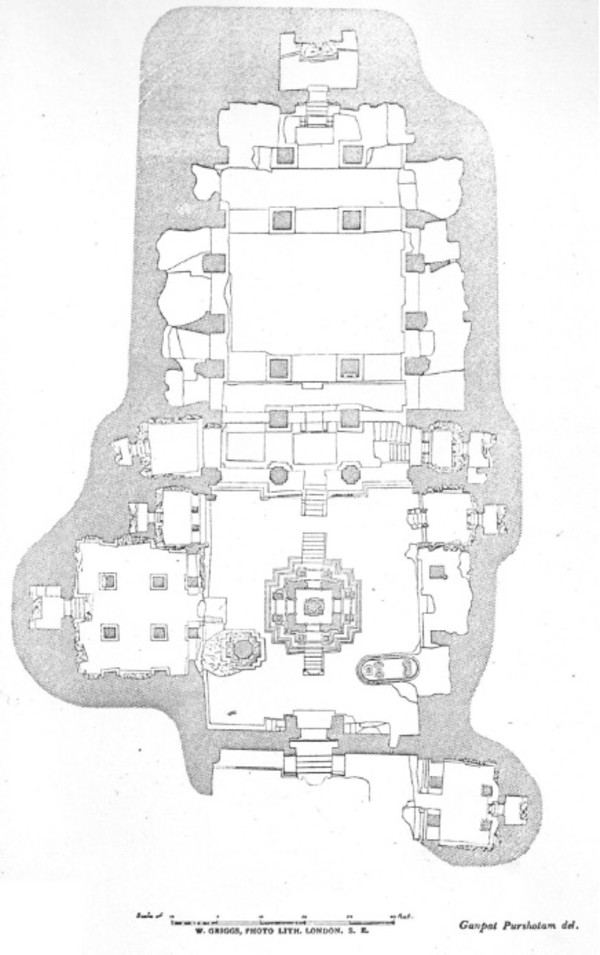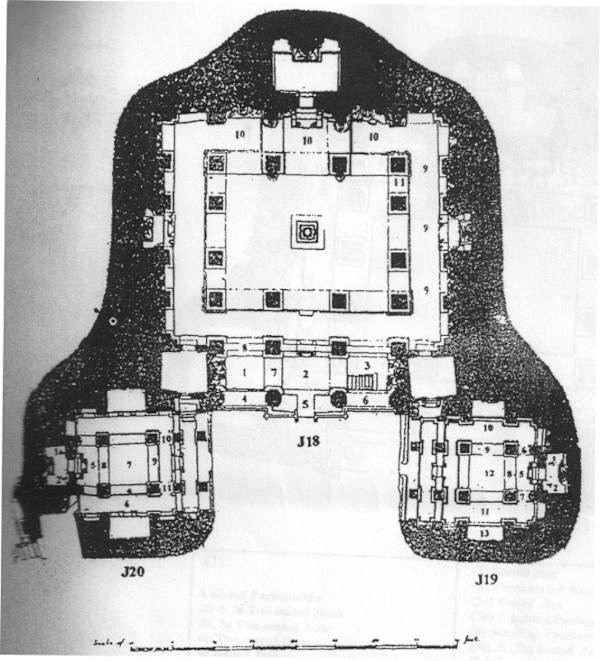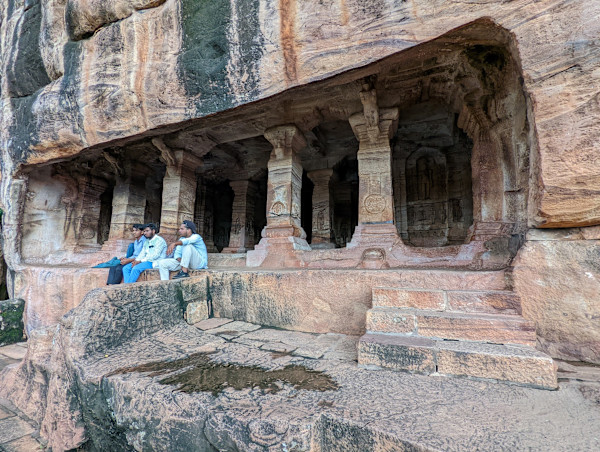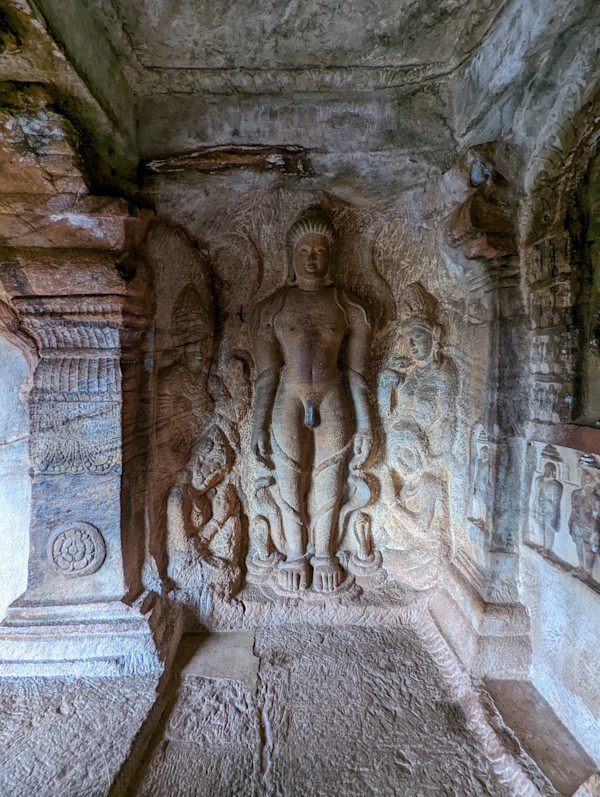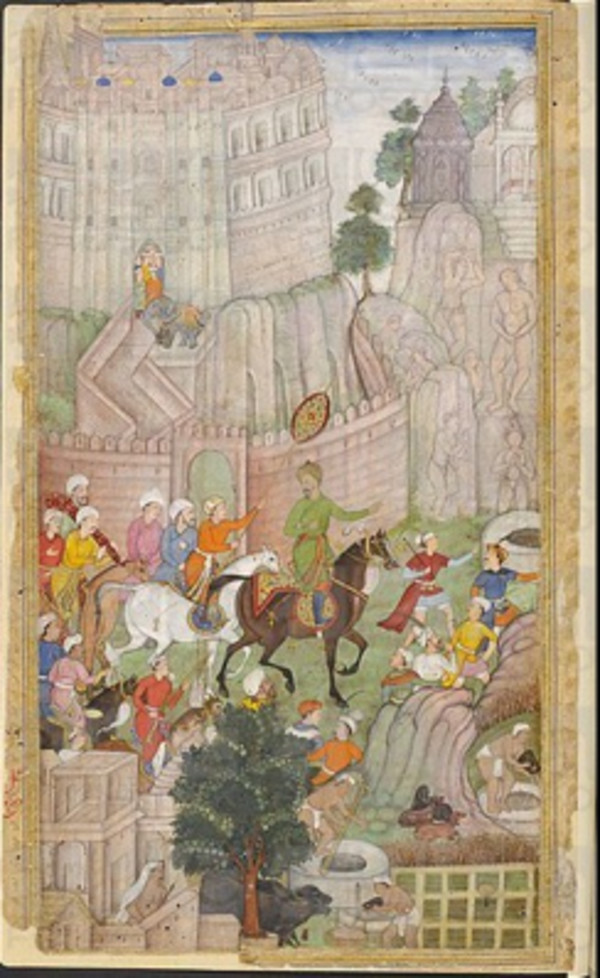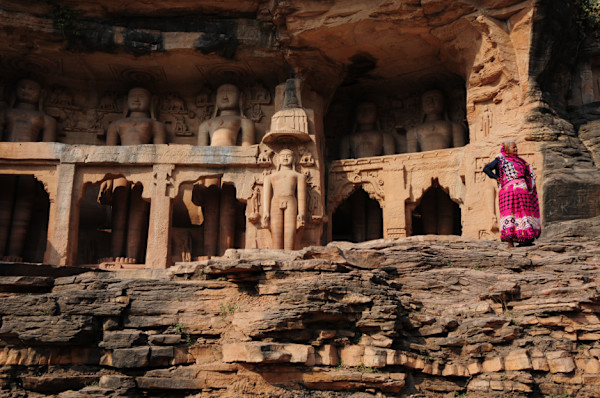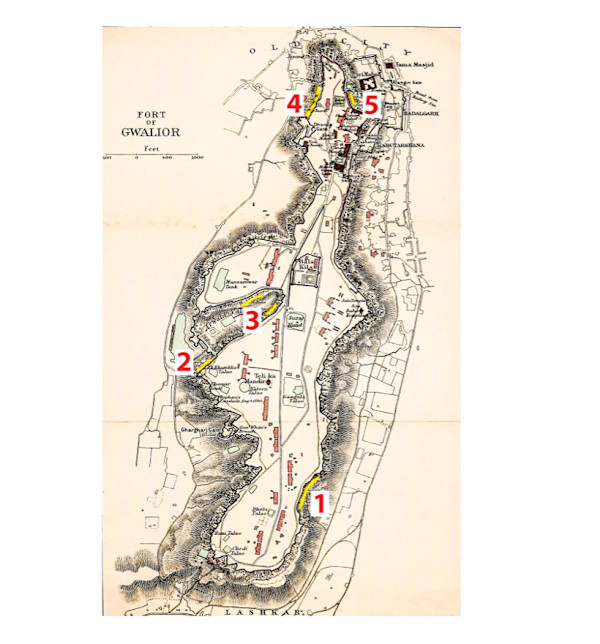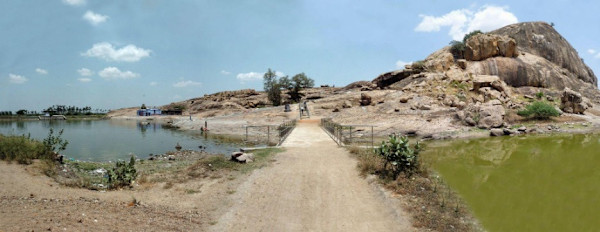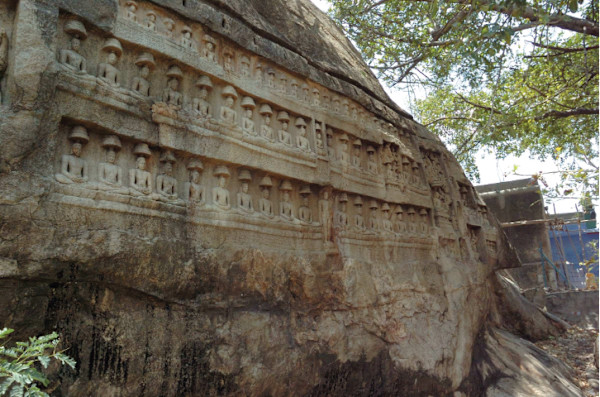Votive tablets, Stupas and Cave Sites x
Votive stone tablets are amongst the earliest remains of Jain devotional and ritual culture. These are characteristic of the site of Mathura (Uttar Pradesh, India) between the 2nd century BCE and 3rd centuries CE and were used as objects of worship, possibly set up for veneration on altars under trees and later in shrines. Known as ayagapatas, these devotional plaques from Mathura are significant as they represent the earliest images of the Jina as a mortal. These were often inscribed and recorded the names of donors and their families.
Though well-known in Buddhist practices, the Mathura ayagapatas provide evidence for the existence of stupa veneration amongst the Jains as well. Sculptural remains from Mathura reveal that ayagapatas were placed horizontally on pedestals, sometimes next to stupas or in temples and monasteries, and could be circumambulated while performing worship rituals. Remains of a stupa, including railings, and pillars carved with yakshis or protector/ attendant deities associated with auspiciousness and fertility have been found from Mathura. Jain stupa structures have not survived but we do have surviving rock-cut monuments, followed later by built temples, where Jain artistic and architectural practices, along with the Jain pantheon and iconography, continued to develop.
The earliest rock-cut sites were primarily residential cave sites for ascetics and were decorated with auspicious and vegetal motifs, similar to those found in ayagapatas. Jinas carved in high relief and seated on lion thrones or pedestals under a single or triple umbrella, accompanied by attendants, worshippers and celestial figures started appearing in the early 5th century. Here we feature early to late medieval cave sites at Ellora (Maharashtra), Gwalior (Madhya Pradesh), Badami (Karnataka) and Kalugumalai (Tamil Nadu). Rock-cut Jinas appeared in groups or in their own shrines. They were often carved life-size or colossal as seen in Gwalior, and were accompanied by the eight great attributes that collectively form the ashtamahapratiharyas (lion throne, attendants with fly whisks, halo, umbrella, celestial drums, a sacred tree, a divine sound, and a shower of celestial flowers). Initially, as at Mathura, most Jina images were nude. Gradually differentiation between the Shvetambara (clothed and bejeweled) and Digambara (unclothed) images became apparent and by the end of the 7th century, each of the 24 Jinas was identified in sculpture through their own cognizance (ex. Mahavira’s cognizance is a lion) and later accompanied by their male and female attendant deities called yakshas and yakshis respectively.
Often these sculptures and rock-cut sacred spaces were painted. Epigraphic records indicate that patrons included royal families as well as lay Jains. Sites like Ellora and Badami were also a part of larger devotional and multireligious complexes.
